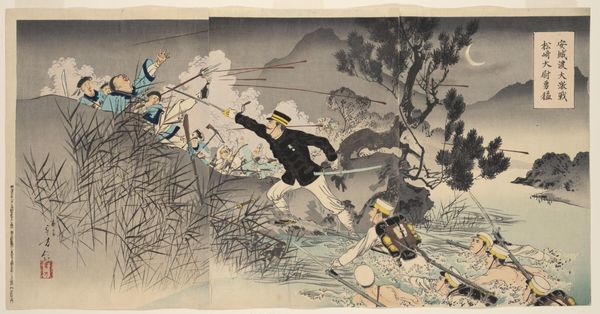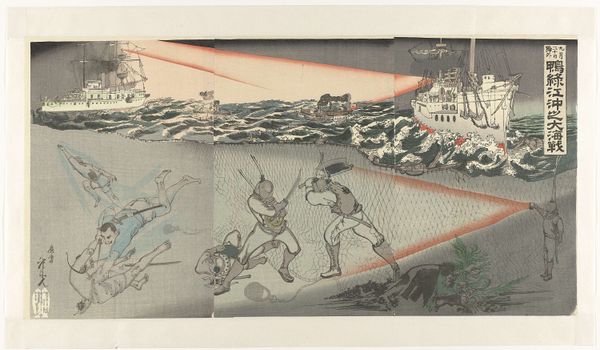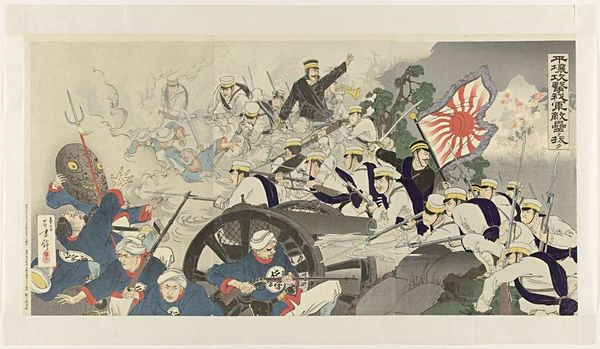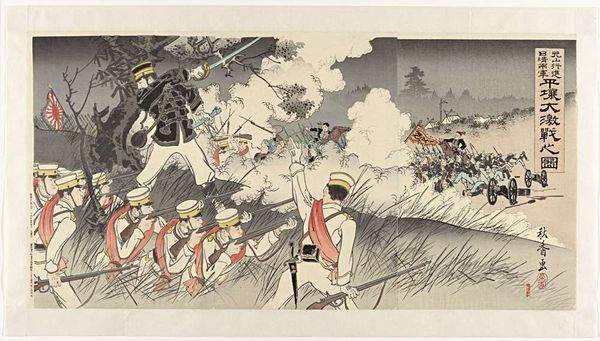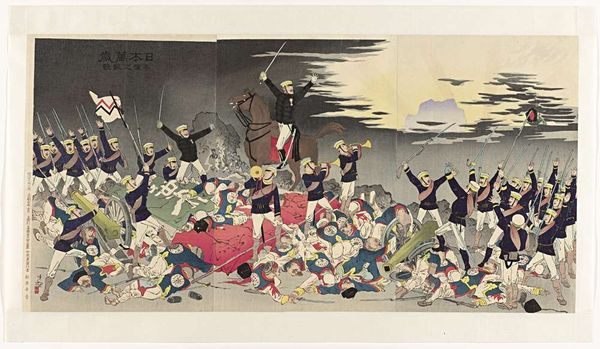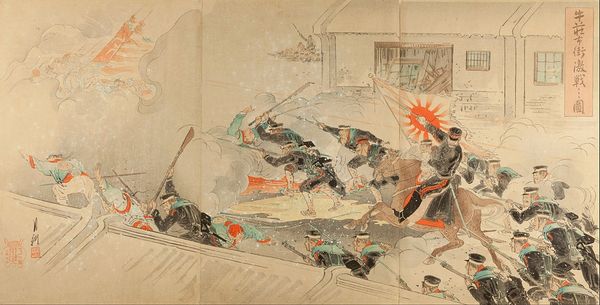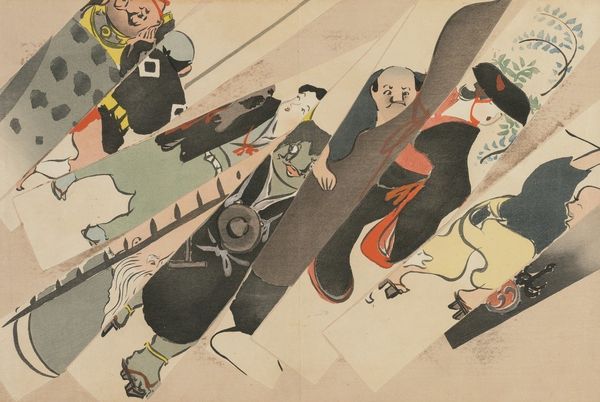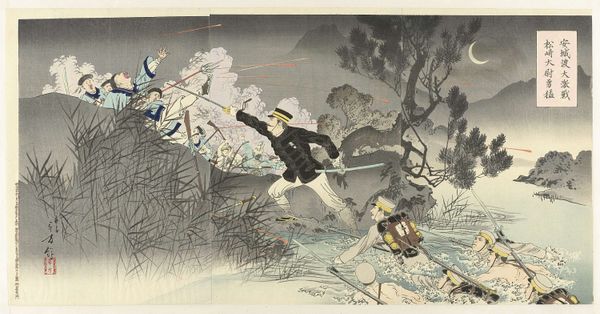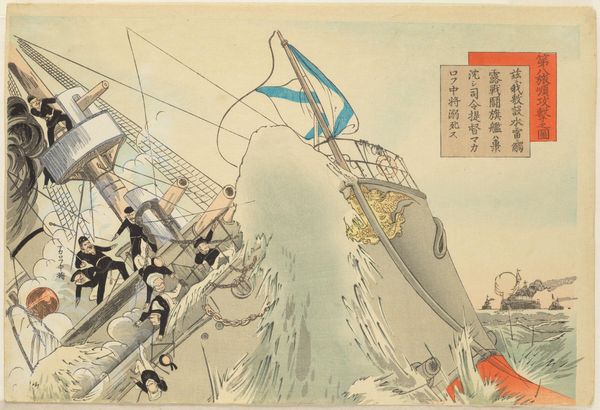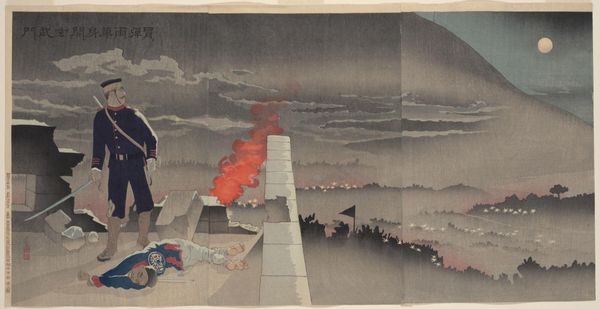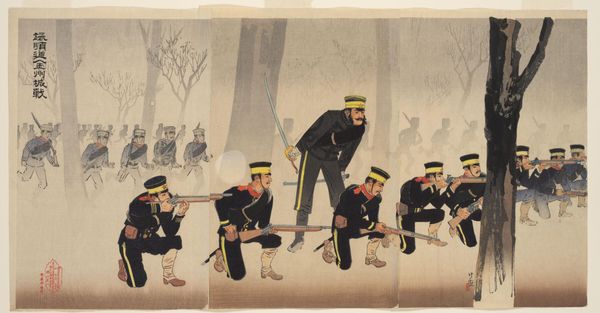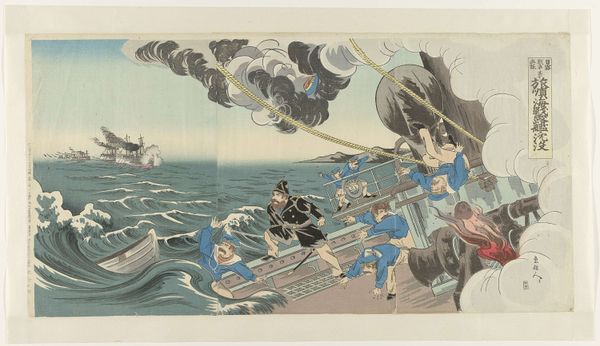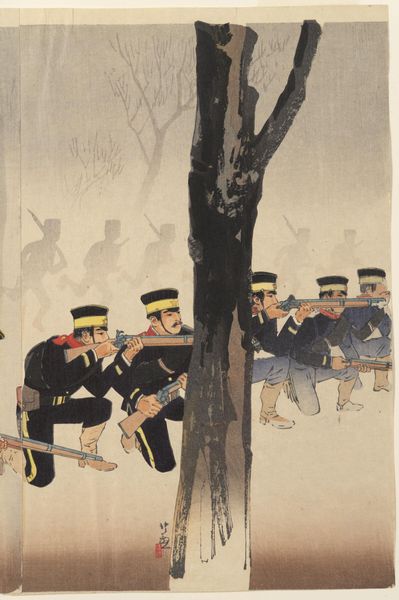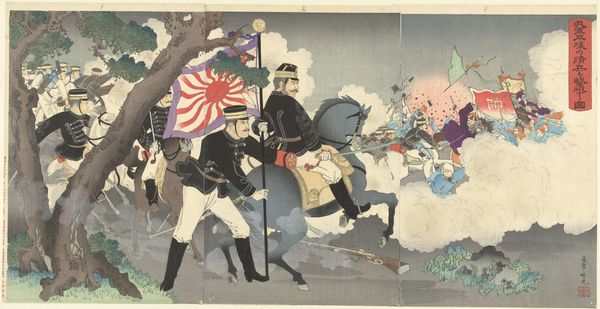
Kabayama, hoofd van het marine commando, valt een vijandig schip aan met de Seikyô Maru 1894
0:00
0:00
Dimensions: height 374 mm, width 724 mm
Copyright: Rijks Museum: Open Domain
Editor: This woodblock print, titled "Kabayama, hoofd van het marine commando, valt een vijandig schip aan met de Seikyō Maru" was created by Adachi Ginkō in 1894. It really captures the chaos of naval warfare, doesn't it? What strikes me most is the sense of forward momentum and action, all depicted through this very traditional medium. What do you see in this piece? Curator: The print's dynamism indeed comes from the strategic use of symbols tied to cultural memory. The naval uniforms are icons of Japanese modernity and military prowess, mirroring the ambitious expansionist policies of the time. And look at the smoke, it's almost dragon-like, recalling traditional myths of power and destruction. Don’t you think there’s an attempt to weave contemporary warfare with longstanding heroic narratives? Editor: That’s a fascinating connection I hadn't considered. I was mainly focused on the almost cinematic quality of the composition. So the symbolism works to elevate the event to a mythical level? Curator: Exactly! Think of how flags function across cultures. They’re not just pieces of cloth; they embody national pride, historical ambitions, and even the psychological state of a nation. Ginkō uses these established visual symbols to instill patriotic sentiments. How does that relate to his audience at the time, do you think? Editor: I imagine this would have resonated deeply. The First Sino-Japanese War was a major event. Representing it through Ukiyo-e, something so ingrained in Japanese culture, creates a powerful and accessible message. Curator: Precisely. It is not just a scene of war; it's a carefully constructed piece of nationalistic storytelling, presented through symbolic visual language deeply rooted in Japanese history and psychology. Editor: I see it now. It's more than just an action scene; it's a blend of contemporary event and traditional symbolism used to boost morale and national identity. Thanks for your help. Curator: My pleasure. Seeing the layering of historical context and symbolism always deepens my understanding, too.
Comments
No comments
Be the first to comment and join the conversation on the ultimate creative platform.
